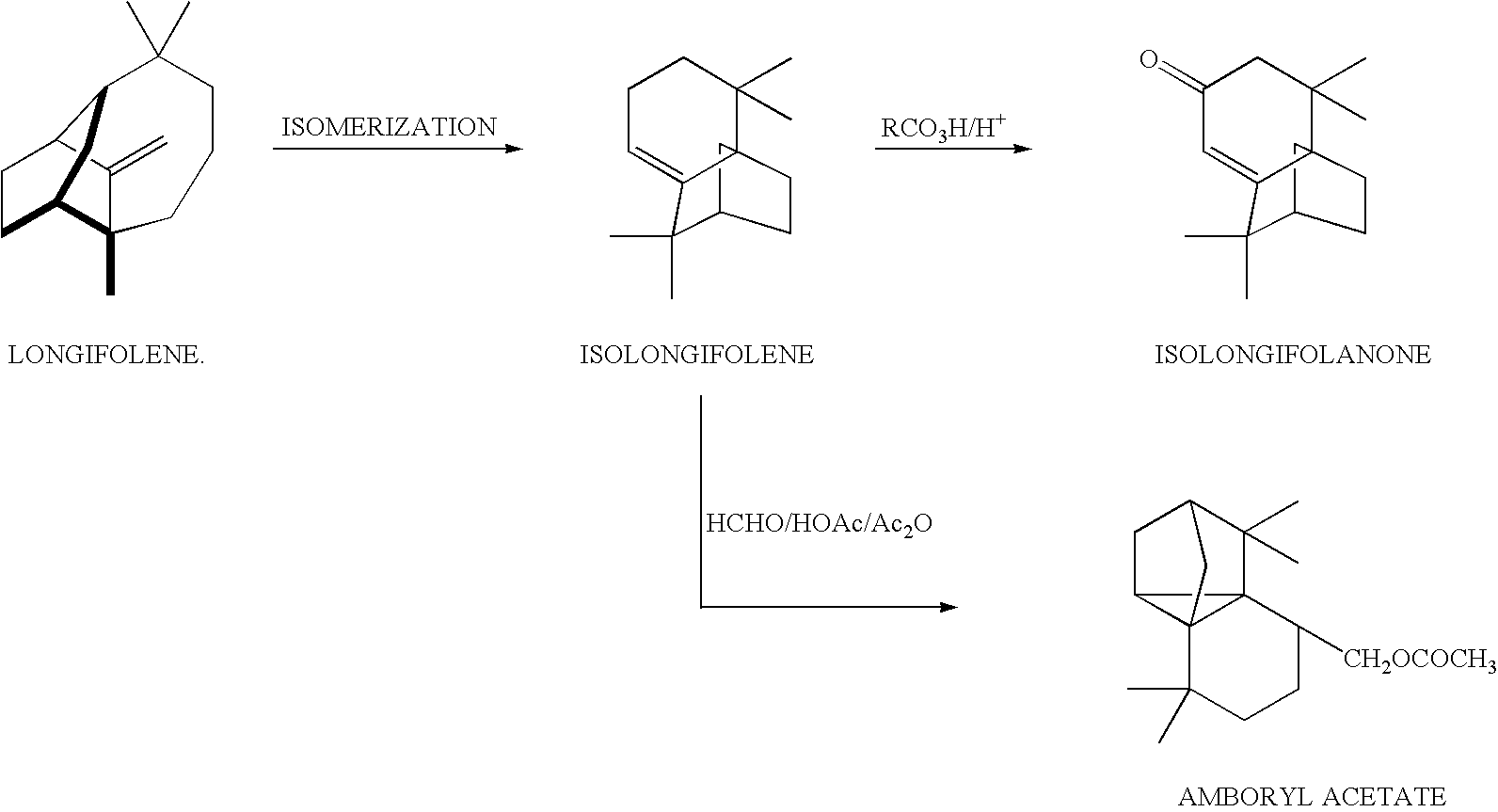Catalytic process for the preparation of isolongifolene
a catalytic process and isolongifolene technology, applied in the direction of hydrocarbon preparation catalysts, metal/metal-oxide/metal-hydroxide catalysts, combustible gas purification/modification, etc., can solve the problem of large quantity of unwanted-waste chemicals, product obtained using mineral acid possesses some colour, and the use of hazardous mineral acid is not safe from handling point of view, so as to achieve 100% selectivity and high conversion and selectivity. ,
- Summary
- Abstract
- Description
- Claims
- Application Information
AI Technical Summary
Benefits of technology
Problems solved by technology
Method used
Image
Examples
example-2
[0050] 2 g of longifolene was taken in two-necked round bottom flask, which was put in an oil bath equipped with temperature controller, magnetic stirrer, condenser and circulator. The temperature of the oil bath was then slowly raised to the desired one, i.e., 140.degree. C. 0.2 gm of catalyst prepared as described in Example-1, pre-activated at 450.degree. C. in muffle furnace for 2 h was added to the reactant. The sample was taken out after 6 h by means of syringe and analysed by gas chromatography using HP-5 column. The percent conversion of longifolene was 85% with 100% selectivity after 6 h.
example-3
[0051] 2 g of longifolene was taken in two-necked round bottom flask, which was put in an oil bath equipped with temperature controller, magnetic stirrer, condenser and circulator. The temperature of the oil bath was then slowly raised to the desired one, i.e., 160.degree. C. 0.2 gm of catalyst prepared as described in Example-1, pre-activated at 450.degree. C. in muffle furnace for 2 h was added to the reactant. The sample was periodically taken out after 2 to 6 h by means of syringe and analysed by gas chromatography using HP-5 column. The percent conversion of longifolene was 84 to 86% with 100% selectivity after 2 to 6 h.
example-4
[0052] 2 g of longifolene was taken in two-necked round bottom flask, which was put in an oil bath equipped with temperature controller, magnetic stirrer, condenser and circulator. The temperature of the oil bath was then slowly raised to the desired one, i.e., 180.degree. C. 0.2 gm of catalyst prepared as described in Example-1, pre-activated at 450.degree. C. in muffle furnace for 2 h was added to the reactant. The sample was periodically taken out from 0.5 to 6 h by means of syringe and analysed by gas chromatography using HP-5 column. The percent conversion of longifolene was 91 to 92% with 100% selectivity after 0.5 to 6 h.
PUM
| Property | Measurement | Unit |
|---|---|---|
| Length | aaaaa | aaaaa |
| Fraction | aaaaa | aaaaa |
| Time | aaaaa | aaaaa |
Abstract
Description
Claims
Application Information
 Login to View More
Login to View More - R&D
- Intellectual Property
- Life Sciences
- Materials
- Tech Scout
- Unparalleled Data Quality
- Higher Quality Content
- 60% Fewer Hallucinations
Browse by: Latest US Patents, China's latest patents, Technical Efficacy Thesaurus, Application Domain, Technology Topic, Popular Technical Reports.
© 2025 PatSnap. All rights reserved.Legal|Privacy policy|Modern Slavery Act Transparency Statement|Sitemap|About US| Contact US: help@patsnap.com

